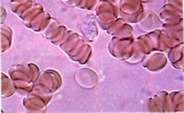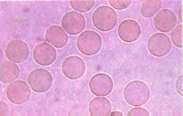Burdock health benefits (Arctium lappa Fam. Compositae)
Popular names: greater burdock, edible burdock, or Lappa burdock.
Traditionally: it was used to dye cloths black, mixed with milkwort, nut shells, water buffalo, etc.
It was one of the most important traditional cures. The leaves were placed on wounds, infections, swellings, adenophaty, etc.
It was also placed on the head against twinges. When the skin was fire-hot, the green leaf was placed on the skin. People suffering from typhoid fever placed leaves on their head to "suck away the evil disease".
In some regions, mothers would anoint their children with buttered burdock leaves, after taking them out of the bath tub.
Children were sometimes covered with leaves if they had cramps. The leaves wet with vinegar were a cure for lower back pain, buttered with butter or fat, for chest pain, but only slightly burnt in fire, for twinges and heart aches.
The decoct was used to wash one's head to stimulate hair growth.
In some villages, for indigestion, bandages around the bellybutton were prepared using 3 burdock roots and 3 horseradish roots, mashed and boiled in borsch, thickened with bran.
The root soaked in brandy was consumed against internal conditions. In some parts, it was mashed, mixed with mashed roots of bryony, blackwort, danewort, etc. and vinegar, borsch bran or rye wheat, preparing a turtle cake to apply on the stomach.
The root decoct was drank against social diseases and skin eruptions; the eczema was to be washed thoroughly. The finely ground seed was placed in yeast brandy or fresh water and the mixture was drunk several times against hernia.
For difficult births, the burdock was boiled, the broth was filtered, sugar was added and then it was offered to the child wife, then she would drink chamomile tea for 3 days, to cleanse her body.
Chemical composition of Burdock
Potassium nitrate, ethereal oil, mucilage, inulin, palmitic acid, caffeic acid, sigmasterol, sitosterol, bitter substances, vitamins B, mineral salts including potassium ones, etc.
Pharmaceutical action
Aromatic, calms down intestinal tormina, absorbs gases, galactagog, reduces nausea, intestinal antiseptic, stimulates digestion, diuretic, renal anti-inflammatory effect, calms down head aches, expectorant, pulmonary antiseptic, gastric anti-inflammatory effect, effects against tumors, effective against light diarrhea. The most toxic part of the plant is the root and it can cause digestive disorder, heavy sweat, nephritis, polyuria or anuria, but with a good recovery time because all symptoms stop when the plant is no longer consumed.
One should also add that is stops infections from appearing and it very effective against germs multiplying. It has an anti-thermal action. It is an excellent astringent and it help the detoxify process in the organism. It moderates and even adjust the secretions in the organism. It helps in the healing process. Due to the diuresis it produces, it is used in a series of liver conditions, gout, diabetes, for those who want to reduce their cholesterol. In dermatological conditions it is very useful from the most frequent and diverse conditions to the most serious ones: cancer. It helps the healing process in all cases.
Cosmetic issues: its actions is diverse, from hair growth to seborrhea or other conditions and it can be successfully used in many cosmetic conditions. We can also notice that it can destroy the staphylococcus due to its active principles. The burdock seeds are recommended for the aging process and even during birth, easing the labor pains.
The fresh leaves are used both in the detoxify process of the organism as well for different wounds having a healing or disinfectant part.
It can be used for the following medical conditions: acne, abscess, oral diseases, urinary tract conditions, liver conditions, lung disease, stomach conditions, allergy, hair loss, anorexia, intestinal bloating, acute or chronic bronchitis, biliary lithiasis, cancer, cellulite, high level of cholesterol, intestinal cramps, fermentation colitis, constipation, cosmetic issues, diabetes, diarrhea, dermatitis, headaches, microbial eczema, dry eczema, eliminate toxins from the organism, epilepsy, polymorphic erythema, skin infections, pharyngitis, fever, furunculosis, flu, gout, hemorrhoids, herpes, high blood pressure, urinary infections, acute and chronic sores, respiratory failure, insect stings, leucorrhea, itchiness, dandruff, mycosis, nephritis, obesity, pemphigus, colds, rheumatics, wounds, seborrheic complexions, tumors, gastric ulcer, skin ulcerations, rash and in many other conditions.
Preparation
Place one teaspoon of ground plant in 250 ml boiling water. Keep covered for 10 minutes then drink it after meals. 3 cups of such tea can be consumed daily. In fermentation colitis it must be consumed unsweetened or sweetened with saccharin.
Tincture
If it is possible, it should be prepared from fresh root. Place 50 g washed and finely chopped root in 250 ml alimentary alcohol 70C. Cover for 15 days keeping it at room temperature. Shake several times a day. Filter and then place in a cold environment, in a smaller bottle. Close it hermetically. Take 1 teaspoon diluted in 100 ml water 2-3 times a day. It can be used like this in all conditions mentioned above. It can be consumed for longer periods of time.
 The Wiegand Gallery, on the campus of Notre Dame de Namur University in Belmont, presents The Society of Six: American Masters of Color from March 11 to April 19, 2003. (left: Selden Gile, Tiburon, 1926, 16 x 20 inches, oil on board)
The Wiegand Gallery, on the campus of Notre Dame de Namur University in Belmont, presents The Society of Six: American Masters of Color from March 11 to April 19, 2003. (left: Selden Gile, Tiburon, 1926, 16 x 20 inches, oil on board) and William H. Clapp -- were plein air painters who worked closely together in Northern California from about 1915 to 1930, and who came to be celebrated for their fresh and direct approach. (right: Selden Gile,Cows and Pasture, n.d., 11 1/2 x 15 1/2 inches, oil on canvas)
and William H. Clapp -- were plein air painters who worked closely together in Northern California from about 1915 to 1930, and who came to be celebrated for their fresh and direct approach. (right: Selden Gile,Cows and Pasture, n.d., 11 1/2 x 15 1/2 inches, oil on canvas)













